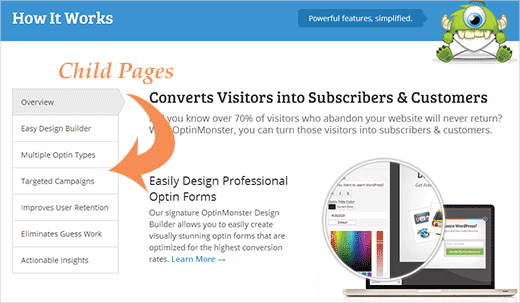How to Display a List of Child Pages For a Parent Page in WordPress
Recently one of our users asked us how to display child pages of a WordPress Page? Often when working on a site that has pages with child pages, you may want to show those child pages on the parent page in a sidebar widget or another location in your template. In this article, we will show you how to display a list of child pages for a parent page in WordPress.
To see an example of a list of child pages on parent page, see the screenshot below that we have from OptinMonster’s How it Works page. You can also see this in use on WPBeginner’s Blueprint page.

Before we get start, for those who are not familiar with Child Pages, please check out our guide on the difference between Posts and Pages in WordPress. One of the important feature of pages is that they can be hierarchical. This means that a page can become a parent page and has child pages (i.e sub-pages) under it. This allows you to group different pages together under one parent page. For example, if you have a Product Page on a website, then you can add pages such as Features, Pricing, and Support as child pages. Each child page can have its own child pages as well.
Video Tutorial

